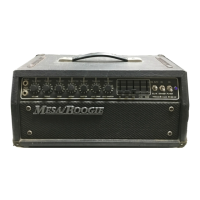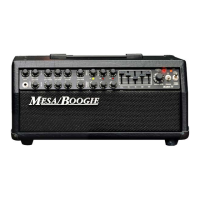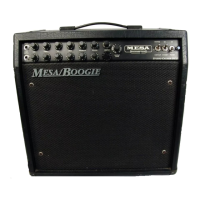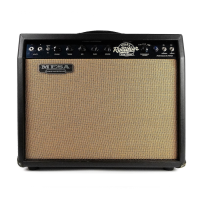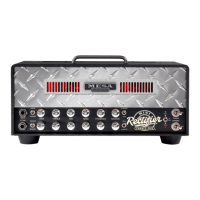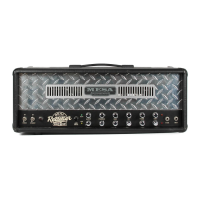PAGE 3
INPUT:
This jack is the instrument INPUT which feeds the first tube in the all-tube preamp of the M3 CARBINE. It is set up with
enough headroom to handle both passive and active style instruments. For active instruments you may find yourself running the GAIN
control somewhere between 10:00 and 2:00 for optimum headroom. If you do hear a soft clip creeping in at
higher settings, don’t worry, this is the beauty of a tube front end. You may feel free to drive the preamp for a
more furry character when hyper-clean is just too clean.
NOTE: When driving the preamp with higher settings of the GAIN control it is wise to reduce the BASS control.
This will protect accidental damage to speakers and help avoid tubbiness or lack of tightness in the low end.
The Input Clip LED indicates when the input grid of the M3 Carbine’s preamp tube will run out of headroom
and begin to clip, no longer sending a clean signal through the rest of the preamp. As mentioned above, clip or distortion generated
at the input is sometimes desireable and no damage is being done to the amp when this LED is lit. Passive basses are unlikely to
cause this LED to be lit even with higher gain settings whereas Active basses and modern higher output pickup systems are more
likely to cause the LED to light up at extreme settings and at extreme peaks of attack.
GAIN:
This control determines the overall character of the input sensitivity. The lower regions of the control (below 12:00) lend
greater headroom and provide a scooped, brighter personality. The upper harmonics come through more prominently in this area
of the control making the top end sound more transparent and sweet. This region is especially useful
for funkier stuff when thumbing is in order. It keeps the rubber-band feel intact in the lows and mids
while voicing the snap just high enough to avoid harshness, or the dreaded “gak” when the G string is
plucked.
As the GAIN control is increased past 12:00 a richer, more “well-rounded” voice becomes dominant
and headroom starts to diminish in increments until eventually, a tube overdrive sound appears as the
12AX7 input tube is driven into saturation.
The region between 12:00 and 2:30 is where the classic, warm tube sound resides and within this nar-
row band you will discover a world of tone. Tiny increments here produce subtle, but important differences in the attack characteristic
which in turn, feel like changes in the time domain.
By experimenting with the amount of gain, you can actually voice the amp to feel as if it bounces just ahead of the groove - or lays
back a little deeper to produce a more Fatback feel. The difference in attack and sustain produces striking results as to how the bass-
ist - and in fact the whole band - perceives things in the time domain.
BASS:
This control is responsible for the basic mix of low frequencies in the tube pre-amp. The BASS control is an active shelving
type control as opposed to a passive style control. This means that a center Q point has been chosen and this control allows you to
either boost or cut that frequency.
The BASS control is actually a gain and frequency control all rolled into one with the Q center at 55Hz
and harmonics in both low and high directions are affected because of its broader band nature. As the
control is increased past 12:00 there is a 6db per octave rise in gain with the frequency topping out at
321Hz. With 12:00 straight-up representing “flat” (a no boost/no cut setting). As the BASS control is
dialed below 12:00, 55Hz and all associated harmonics are reduced and eventually notched completely
out of the signal. Conversely, there is a 6db per octave cut beginning at 55Hz going down to 20Hz
where the shelving ends with a cut gain of -20db as the control approaches 7:30 (off).
FrONT PANeL CONTrOLS:
MID
INPUT
CLIP
®
INPUT
TRANS-CLASS
™
